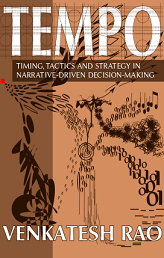I’ve been buried neck deep in work stuff this week, but I did find time to make this stack diagram of the world, inspired by the xkcd Dependency cartoon. Randall Munroe draws better than me, but in my favor, I use more colors.

Did you know most of the high-purity quartz needed for the semiconductor industry (for the equipment more than the wafers if I understand correctly; I’m foggy on that end of the industry) comes from one mine in North Carolina, and that the making of high-purity quartz is a closely guarded trade secret known only to a handful of organizations? I’m guessing China is close to figuring it out. It’s weird to think how fragile the world’s infrastructure is. Mess with one mine and take enough potshots at shipping near Yemen and you can shut the world down.
It’s funny how the utopian/dystopian discourses at the highest levels of abstraction, AI and crypto (the two domains that keep me busy at work) never worry much about the fragile bottom of the stack. I made up some non-starter political slogans about this situation:
Non-starter political slogans
- Decentralize the quartz mines!
- Permissionless 99.9% purity quartz for everyone!
- Open-source EUV machines!
- Oil from backyard CCS stills!
- Lithium salts for the people!






